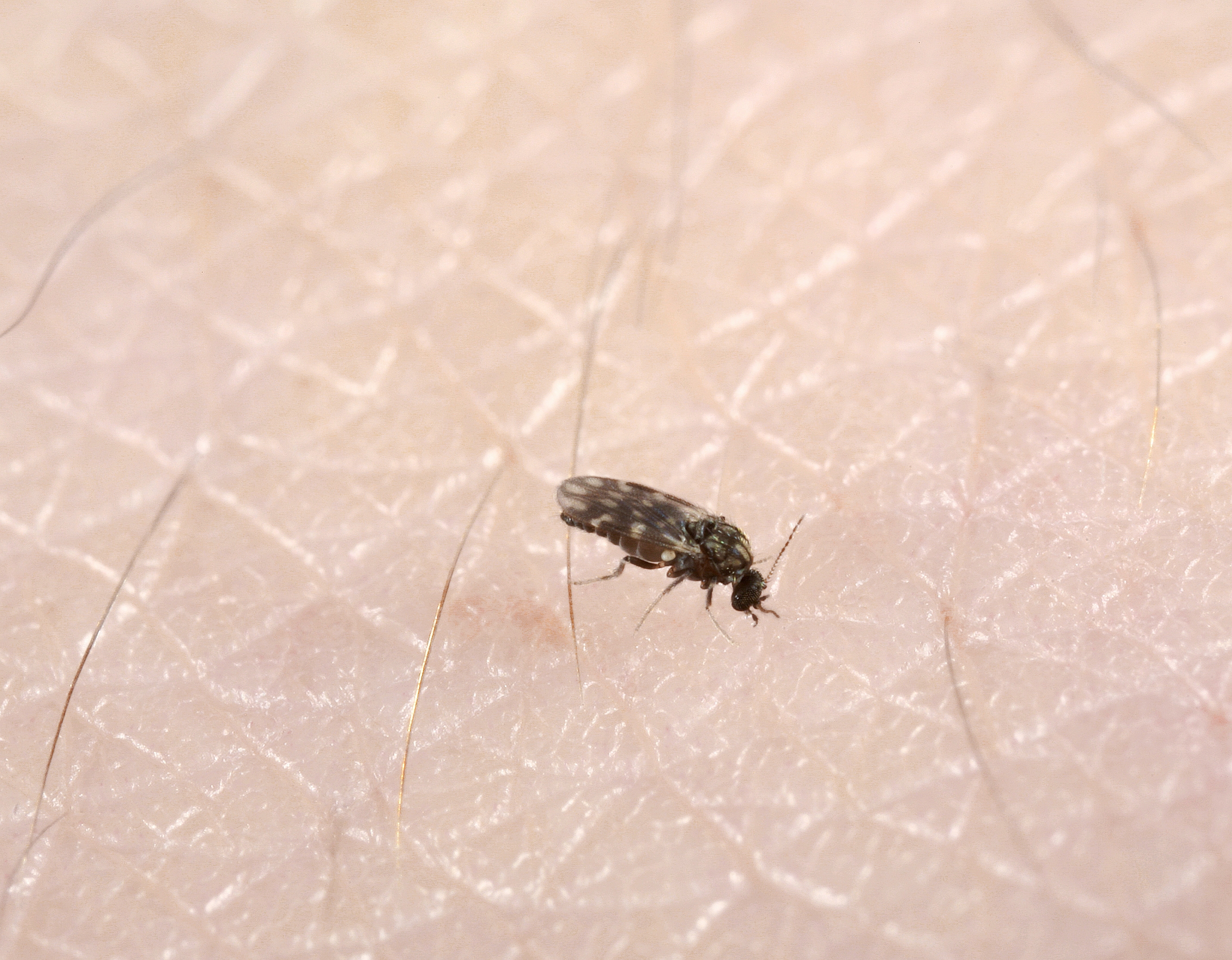Oropouche fever
Editor-In-Chief: Prab R Tumpati, MD
Obesity, Sleep & Internal medicine
Founder, WikiMD Wellnesspedia &
W8MD medical weight loss NYC and sleep center NYC
| Oropouche fever | |
|---|---|

| |
| Synonyms | N/A |
| Pronounce | N/A |
| Specialty | N/A |
| Symptoms | Fever, headache, myalgia, arthralgia, rash |
| Complications | Meningitis, encephalitis |
| Onset | 4-8 days after exposure |
| Duration | 1-2 weeks |
| Types | N/A |
| Causes | Oropouche virus |
| Risks | Exposure to biting midges or mosquitoes in endemic areas |
| Diagnosis | Serology, PCR |
| Differential diagnosis | N/A |
| Prevention | Avoiding bites from infected vectors |
| Treatment | Supportive care |
| Medication | N/A |
| Prognosis | N/A |
| Frequency | Endemic in parts of South America |
| Deaths | N/A |
Oropouche fever is a tropical disease caused by the Oropouche virus. The virus is transmitted to humans by the bite of the midge Culicoides paraensis. The disease is named after the Oropouche River in Trinidad and Tobago where it was first discovered.
Symptoms[edit | edit source]
The symptoms of Oropouche fever include fever, headache, myalgia, arthralgia, rash, and meningitis. The disease is usually self-limiting and lasts for 3-8 days. Severe cases can lead to meningoencephalitis.
Transmission[edit | edit source]
The Oropouche virus is transmitted to humans by the bite of the midge Culicoides paraensis. The virus can also be transmitted by the Aedes aegypti mosquito. The virus is found in tropical regions of South America, including Brazil, Peru, Panama, and Trinidad and Tobago.
Diagnosis[edit | edit source]
Diagnosis of Oropouche fever is based on the patient's symptoms and travel history. Laboratory tests can confirm the diagnosis. These tests include polymerase chain reaction (PCR) and serology tests.
Treatment[edit | edit source]
There is no specific treatment for Oropouche fever. Treatment is supportive and includes rest, fluids, and pain relievers. In severe cases, hospitalization may be required.
Prevention[edit | edit source]
Prevention of Oropouche fever involves avoiding bites from midges and mosquitoes. This can be achieved by using insect repellent, wearing long-sleeved shirts and long pants, and staying in air-conditioned or screened-in areas.
See also[edit | edit source]
References[edit | edit source]
Search WikiMD
Ad.Tired of being Overweight? Try W8MD's physician weight loss program.
Semaglutide (Ozempic / Wegovy and Tirzepatide (Mounjaro / Zepbound) available.
Advertise on WikiMD
|
WikiMD's Wellness Encyclopedia |
| Let Food Be Thy Medicine Medicine Thy Food - Hippocrates |
Translate this page: - East Asian
中文,
日本,
한국어,
South Asian
हिन्दी,
தமிழ்,
తెలుగు,
Urdu,
ಕನ್ನಡ,
Southeast Asian
Indonesian,
Vietnamese,
Thai,
မြန်မာဘာသာ,
বাংলা
European
español,
Deutsch,
français,
Greek,
português do Brasil,
polski,
română,
русский,
Nederlands,
norsk,
svenska,
suomi,
Italian
Middle Eastern & African
عربى,
Turkish,
Persian,
Hebrew,
Afrikaans,
isiZulu,
Kiswahili,
Other
Bulgarian,
Hungarian,
Czech,
Swedish,
മലയാളം,
मराठी,
ਪੰਜਾਬੀ,
ગુજરાતી,
Portuguese,
Ukrainian
Medical Disclaimer: WikiMD is not a substitute for professional medical advice. The information on WikiMD is provided as an information resource only, may be incorrect, outdated or misleading, and is not to be used or relied on for any diagnostic or treatment purposes. Please consult your health care provider before making any healthcare decisions or for guidance about a specific medical condition. WikiMD expressly disclaims responsibility, and shall have no liability, for any damages, loss, injury, or liability whatsoever suffered as a result of your reliance on the information contained in this site. By visiting this site you agree to the foregoing terms and conditions, which may from time to time be changed or supplemented by WikiMD. If you do not agree to the foregoing terms and conditions, you should not enter or use this site. See full disclaimer.
Credits:Most images are courtesy of Wikimedia commons, and templates, categories Wikipedia, licensed under CC BY SA or similar.
Contributors: Prab R. Tumpati, MD

